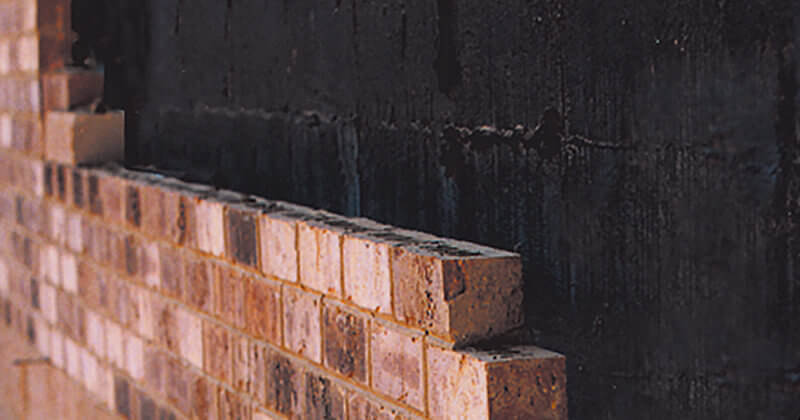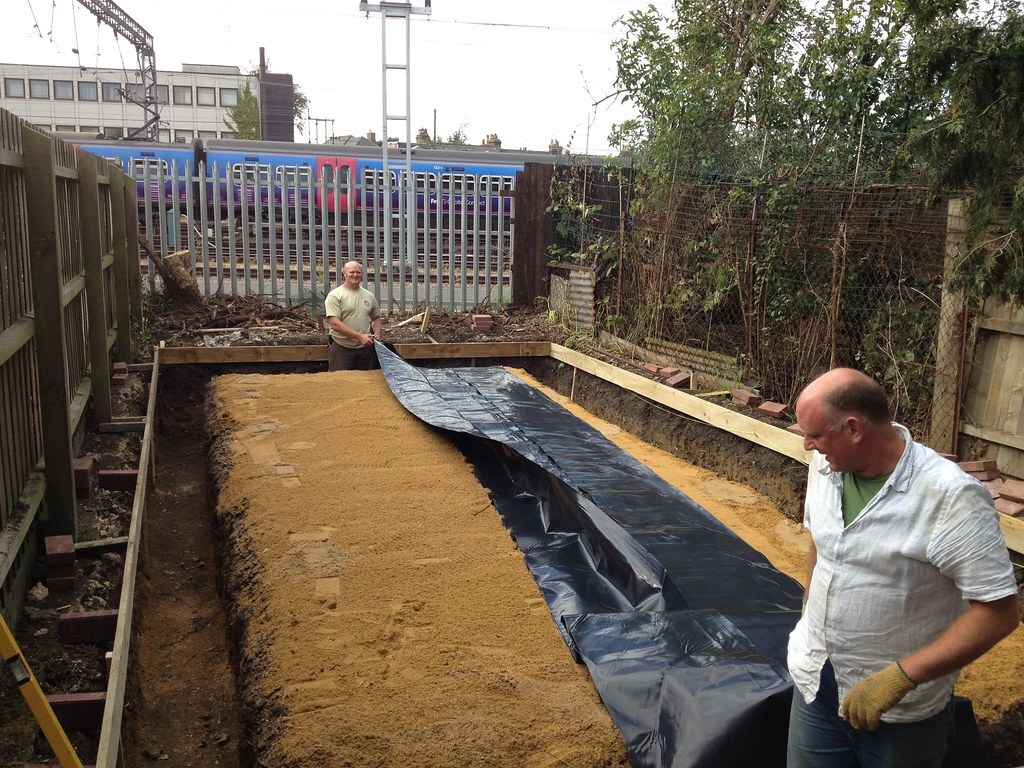Main distinctions rising vs. penetrating damp explained by a damp specialist newcastle
Main distinctions rising vs. penetrating damp explained by a damp specialist newcastle
Blog Article
Exploring the Different Techniques and Solutions for Effective Damp Proofing
Moisture in buildings poses significant challenges to both architectural honesty and interior air quality. Numerous methods and services have emerged to battle this pervasive concern. From traditional damp-proof membranes to ingenious chemical treatments, each technique offers one-of-a-kind advantages. Comprehending these options is essential for efficient dampness control. Nonetheless, choosing the ideal option relies on details building problems and demands, prompting additional expedition right into the most reliable wet proofing techniques available.
Comprehending the Reasons For Dampness
Although dampness can arise from various resources, understanding these causes is crucial for efficient remediation. Commonly, moisture stems from three primary resources: increasing moist, permeating damp, and condensation. Climbing moist happens when groundwater takes a trip up through porous products, such as block or rock, often because of a lack of a reliable barrier (mould removal newcastle). Passing through wet is normally brought on by external aspects, including roof covering leakages, damaged seamless gutters, or damaged wall surfaces, enabling water to infiltrate a residential or commercial property. Condensation, on the various other hand, results from excess moisture airborne, typically exacerbated by inadequate ventilation and temperature differences, leading to water droplets creating on surface areas. Determining these underlying issues is crucial, as each type of dampness calls for a tailored method for removal. Proper evaluation aids in determining one of the most reliable options, eventually guarding the structural integrity of a building and improving indoor air high quality
Typical Damp-Proof Membranes

Chemical Damp-Proofing Solutions
Chemical damp-proofing remedies provide an innovative method to stop wetness breach in structures. These approaches commonly include the application of liquid chemicals that pass through masonry and create an obstacle against rising wet. Frequently made use of chemicals include silanes, siloxanes, and various other water-repellent agents that react with surface products to produce a hydrophobic layer.The application procedure normally needs exploration openings right into the wall surfaces, injecting the chemical remedy, and enabling it to cure. This approach is specifically beneficial for older frameworks where typical damp-proof membrane layers might be unwise. Chemical damp-proofing can be much less disruptive and a lot more cost-efficient than considerable renovation projects.While effective, these solutions depend on proper application and environmental problems for peak efficiency. damp specialist newcastle. Normal upkeep and surveillance are vital to assure the durability of the damp-proofing therapy. Generally, chemical damp-proofing stands for a flexible option for protecting structures against moisture-related damage
Tooth Cavity Wall Construction Strategies
Cavity wall surface building methods offer many advantages, particularly in moisture control and energy efficiency. By integrating an air space between two layers of masonry, these walls efficiently reduce water access while boosting insulation. This mix not just protects frameworks from moisture but also adds to decreased energy intake.
Benefits of Tooth Cavity Wall Surfaces
When thinking about reliable damp proofing techniques, the advantages of dental caries wall surfaces stand out prominently. Tooth cavity wall surfaces consist of 2 separate layers, developing an air gap that properly minimizes dampness infiltration. This style minimizes the threat of dampness, as the external wall acts as an obstacle against rain and water ingress. In addition, tooth cavity wall surfaces boost thermal insulation, which contributes to power performance by decreasing warmth loss. They also give sound insulation, helping to create a quieter interior environment. Moreover, the air space enables ventilation, which assists in wetness control and reduces the probability of mold development. These benefits not only improve the total convenience of a building but likewise add to its longevity and architectural stability.
Wetness Control Strategies
Efficient wetness control strategies are important in cavity wall building to guarantee lasting defense versus moisture. One main method involves the unification of weep holes, which assist in water drainage from the dental caries, avoiding build-up. In addition, the usage of breathable membrane layers can assist manage moisture levels while enabling caught vapor to run away. Appropriate positioning of insulation is likewise important, as it ought to not block water drainage paths. Making certain that the outer fallen leaves of the cavity wall surface are built with waterproof products enhances total durability. Routine maintenance checks are vital to recognize any kind of blockages or damages early, securing the structure's integrity. Ultimately, a mix of these techniques creates a robust protection versus moisture intrusion in cavity walls.
Insulation and Power Effectiveness
Insulation plays a vital duty in enhancing energy performance within tooth cavity wall surface building. By including shielding products, these walls create a thermal barrier that reduces heat loss and decreases power consumption. Effective insulation not only helps preserve a stable interior temperature level however likewise alleviates the threat of dampness, as it protects against condensation within the wall surface dental caries. Different techniques, such as the usage of rigid foam boards or mineral wool, can be utilized to accomplish excellent insulation performance. Furthermore, correct setup is necessary to ensure that gaps and spaces are minimized, which can otherwise endanger power efficiency. Ultimately, a well-insulated tooth cavity wall surface adds greatly to general sustainability and reduces heating and cooling expenses for home owners.
External Damp Proofing Techniques
Exterior damp proofing methods are crucial for safeguarding structures from wetness infiltration. 2 effective methods include the application of water-proof membrane layers and the setup of French drains pipes. These options assist reduce water build-up and protect the honesty of buildings.
Waterproof Membrane Application
While various approaches exist for avoiding moisture ingress, the application of water resistant membranes remains a very efficient exterior moist proofing method. These membrane layers are typically made from materials such as polyethylene, rubber, or modified bitumen, giving a durable barrier versus water penetration. The setup procedure involves using the membrane layer to the external surfaces of foundations or wall surfaces, ensuring complete coverage to avoid leakages. Appropriate bond and securing at joints are crucial to making best use of effectiveness. Waterproof membranes can be applied in various forms, consisting of liquid layers and sheet membranes, enabling adaptability based upon the particular requirements of the structure. This technique not just shields structures from wetness however also improves their durability and architectural stability.
French Drainpipe Setup
One effective approach for managing groundwater and avoiding dampness build-up around a structure's foundation is the installment of a French drain. This drainage system includes a trench loaded with crushed rock and a perforated pipeline that reroutes surface water far from the foundation. Appropriate installation calls for careful preparation, guaranteeing that the drainpipe inclines away from the framework to promote excellent water flow. Furthermore, the place of the drain is vital; it ought to be placed in locations prone to pooling or excess wetness. Normal maintenance, consisting of cleaning particles from the crushed rock and guaranteeing the pipe continues to be unblocked, is essential for long-term efficiency. Inevitably, a well-installed French drain can greatly minimize the threat of water-related problems in foundations and cellars.
Inside Waterproofing Techniques
Interior waterproofing approaches are vital for shielding a structure's interior from dampness infiltration and prospective water damages. These techniques commonly include the application of specialized materials and techniques created to create a dampness obstacle within the structure. One typical strategy is the usage of water resistant coverings or sealers on walls and floors, which avoid moisture from passing through surfaces.Additionally, mounting interior drainage systems, such as sump pumps, can effectively take care of water accumulation in cellars and creep rooms. One more technique entails the usage of vapor obstacles, which are set up to prevent dampness activity from the ground into living spaces.Moreover, resolving any kind of fractures or gaps in walls or structures with proper sealers assures an extensive protection against water intrusion. By executing these indoor waterproofing approaches, building owners can greatly decrease the risk of mold growth, architectural damages, and various other moisture-related concerns. Appropriate implementation of these methods is crucial for long-term defense and building integrity.
Routine Maintenance and Inspection Practices
Routine maintenance and assessment practices are vital for ensuring the long-term performance of damp proofing solutions in any building. Routine checks allow homeowner to recognize very early indicators of wetness intrusion, such as peeling off paint, mold development, and musty odors. These signs can signal underlying concerns that need instant attention.Inspections need to be performed a minimum of yearly, concentrating on vulnerable locations like basements, creep areas, and exterior wall surfaces. During these assessments, homeowner should analyze sealants, water drainage systems, and ventilation to validate they function correctly.Additionally, keeping rain gutters and downspouts is important, as stopped up systems can result in water buildup near the foundation. Implementing a regular upkeep routine, together with prompt repair work, can substantially extend the life expectancy of moist proofing procedures and secure the structural stability of the building. Positive actions inevitably add to the overall health and wellness of the living setting.
Regularly Asked Questions
Exactly How Long Does Damp Proofing Typically Last?
The duration of moist proofing effectiveness differs, normally lasting between 20 to half a century. Variables such as application quality, environmental conditions, and maintenance techniques greatly influence the longevity of the wet proofing check here treatment.

Can I Damp Evidence My Home Myself?
The specific contemplated the usefulness of DIY damp proofing. With proper research and the best products, it is feasible. They likewise acknowledged the significance of specialist assistance to assure durable effectiveness and avoid future concerns.
What Are the Signs of Ineffective Damp Proofing?
Indicators of ineffective damp proofing consist of persistent moldy smells, noticeable mold development, peeling off paint, moist patches on wall surfaces, and wood decay - mould removal newcastle. Home owners ought to resolve these concerns promptly to stop further damage and health and wellness concerns
Does Damp Proofing Affect Indoor Air High Quality?

Just How Much Does Expert Damp Proofing Price?
Professional damp proofing expenses differ significantly, commonly varying from $1,000 to $5,000 depending on the residential property's size, the extent of the damp issue, and chosen methods. Each scenario needs a tailored evaluation for precise prices. Frequently, wetness stems from 3 key resources: increasing moist, penetrating wet, and condensation. When taking into consideration efficient wet proofing techniques, the benefits of cavity wall surfaces stand out prominently. External damp proofing methods are important for securing structures from moisture infiltration. While different techniques exist for avoiding wetness ingress, the application of water resistant membranes continues to be an extremely efficient exterior damp proofing strategy. Signs of inefficient moist proofing include relentless mildewy smells, visible mold and mildew development, peeling paint, moist patches on walls, and timber decay.
Report this page